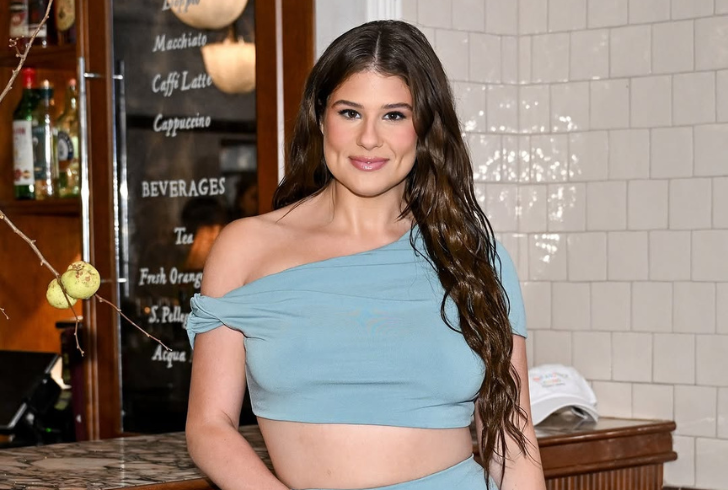Alan Carr’s stint on “The Celebrity Traitors” began with more than just strategy and bluffing—it revealed a surprisingly human side of the comedian. Just 32 minutes into the first episode, after being chosen as a “traitor,” Carr’s body started giving him away. Sweat formed beads on his forehead, a visible sign of tension. “I thought I wanted to be a traitor, but I have a sweating problem,” he confessed. “And I can’t keep a secret.”
Professor Gavin Thomas, a microbiologist at the University of York, noted that Carr’s perspiration was likely eccrine sweat, produced by glands all over the body in response to stress. Yet, what drew attention was not just the sweat itself but Carr’s candidness about it, sparking lively commentary on social media. His openness underscores a shift in how society discusses bodily functions, a trend that has been accelerating for over a decade.
Even fellow contestant Celia Imrie joined the conversation with unfiltered honesty, admitting on the show: “I just farted… It’s the nerves, but I always own up.” Such frankness reflects a growing comfort among public figures in acknowledging their bodies without embarrassment.
Public Figures Speaking Out

High-profile names have increasingly opened up about sweat and other bodily responses. Steve Carell and Emma Stone have shared personal struggles with perspiration, while Chrissy Teigen revealed in 2019 that excessive armpit sweat led her to get Botox injections. Adele went further, recounting during a 2023 Las Vegas performance that her sweating had caused a fungal infection. “I sweat a lot and it doesn’t go anywhere, so I basically am just sitting in my own sweat,” she told thousands in the audience.
This cultural shift is also mirrored in the market. Fitness shops promote “sweat suits,” and brands like Sweaty Betty celebrate perspiration as a part of an active lifestyle. As one founder put it years ago: “It’s cool to sweat now.”
Saunas as Social Equalizers
Beyond entertainment and fashion, the social role of sweating has evolved in professional spaces. In south London, young professionals are conducting business meetings in saunas, embracing the physical discomfort to spark creativity. Josh Clarricoats, a local food startup owner, admits, “Actually, our best creative thinking happens when we’re there. It’s something about sweating, being uncomfortable, and the endorphins it releases.”
The trend draws from Finnish traditions, where löyly—the combination of sweat, heat, and steam—is believed to foster spiritual and social connection. Finnish sauna diplomacy, such as the historic meeting between President Urho Kekkonen and Nikita Khrushchev, highlights how sweating has long been intertwined with strategy and relationship-building.
High-end sauna chains are now thriving in the U.S. and UK, with memberships reaching $200 per month in New York and San Francisco.
According to the British Sauna Association, there are now more than 400 saunas across the UK—a sharp rise from just a few years ago. Physiologist Gabrielle Reason puts it simply: “When you’re sweating in a sauna…you look an absolute mess, but there’s something freeing about it. You stop caring how you look.”
The History of Sweat and Shame
Sweat hasn’t always been celebrated. In medieval England, “sweating sickness” terrified communities, often killing victims in mere hours. By the early 1900s, perspiration had been rebranded as a moral failing, especially for women. A 1938 Mum deodorant ad bluntly warned that underarm odor could lead to rejection—proof that shame had become a marketing strategy.
Sarah Everts, chemist and author of The Joy of Sweat, recalls feeling embarrassed even in spaces meant for exercise. “In a hot yoga class, I’d notice that the first drip of sweat would always come from me,” she says. Over time, however, that shame has diminished as public discussions around sweat have become more open.
The Rise of the “Sweaty Hot Girl”

Modern beauty culture has reframed sweat as appealing rather than embarrassing. In 2020, Forbes described public sweatiness as a “hottest and coolest fashion trend,” and Vogue has highlighted the aesthetic of a post-gym glow. Dove’s 2023 campaign encouraged users to post images of their sweaty armpits under the hashtag #FreeThePits, challenging old notions of shame. TikTok influencer Remi Bader promotes this openness, stating, “I’m very, very open with my followers about how I’m very sweaty. It’s so normal.”
Mobile beauty therapist Zoe Nicols observes demand for a “sweaty makeup” look, mirroring the popularity of hot yoga and sauna-inspired aesthetics. Yet, Everts remains cautious, noting that such trends can be co-opted commercially. “It’s a little egregious to be capitalizing on body positivity for product promotion,” she warns.
Health Benefits and Misconceptions
Beyond culture and fashion, sweating plays a vital physiological role. While claims about detoxification via sweat are largely unsubstantiated, eccrine sweat is essential for regulating body temperature. Dr. Adil Sheraz of the Royal Free NHS Trust explains that tiny sweat glands—numbering between two and five million per person—help cool the body through evaporation.
Everts traces the benefits back to prehistoric humans, who relied on sweating to sustain prolonged activity under the sun. “Evolutionary biologists point to sweat as one of the things that makes our species unique. It’s an enormous superpower.”
When Sweat Becomes a Challenge
For some, sweating isn’t just a minor annoyance—it’s a chronic medical condition known as hyperhidrosis, which affects between one and five percent of people. The disorder causes uncontrollable perspiration without heat, stress, or exercise, often disrupting daily life and social comfort.

Melissa remembers what growing up with hyperhidrosis felt like: “Other children could play or hold hands without thinking, but I always noticed my wet palms and soaked socks.” In adulthood, the challenge continues—something as ordinary as signing a document or greeting someone with a handshake can feel daunting. Growing awareness of hyperhidrosis has helped normalize conversations and reduce the quiet shame that once surrounded it.
Sweat in a Warming World
Experts predict that interest in sweat will continue to grow, especially with rising global temperatures. Prof. Davide Filingeri from Southampton University notes that humans have physiological limits in sweat production, which may be tested as heatwaves become more frequent, though air conditioning may provide some relief.
Everts emphasizes that these conversations around sweat are positive: “Humans will certainly be sweating a lot more in the future. Developing serenity about sweating is essential.”
Understanding Sweat and Social Norms
Alan Carr’s shiny forehead and Celia Imrie’s candid admission on “The Celebrity Traitors” highlight how societal attitudes toward sweat and other bodily functions are shifting. From historical fear and shame to modern celebration and even fashion trends, our relationship with sweat has transformed.
Saunas, beauty trends, and celebrity openness reflect a growing acceptance of the human body as it is, while conditions like hyperhidrosis remind us that sweat is more than a cultural statement—it’s a deeply personal experience.
As climate and lifestyle evolve, conversations about sweat may become even more relevant, pushing society to embrace its natural, shared humanity.
